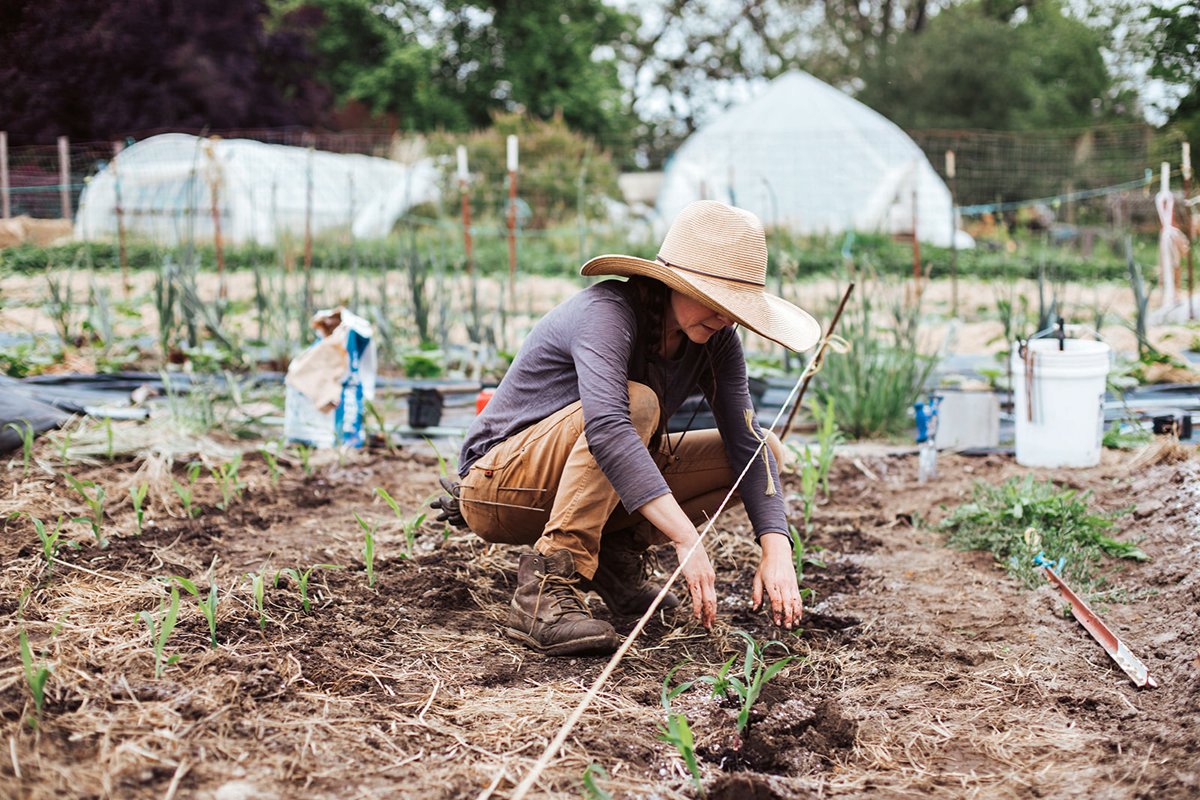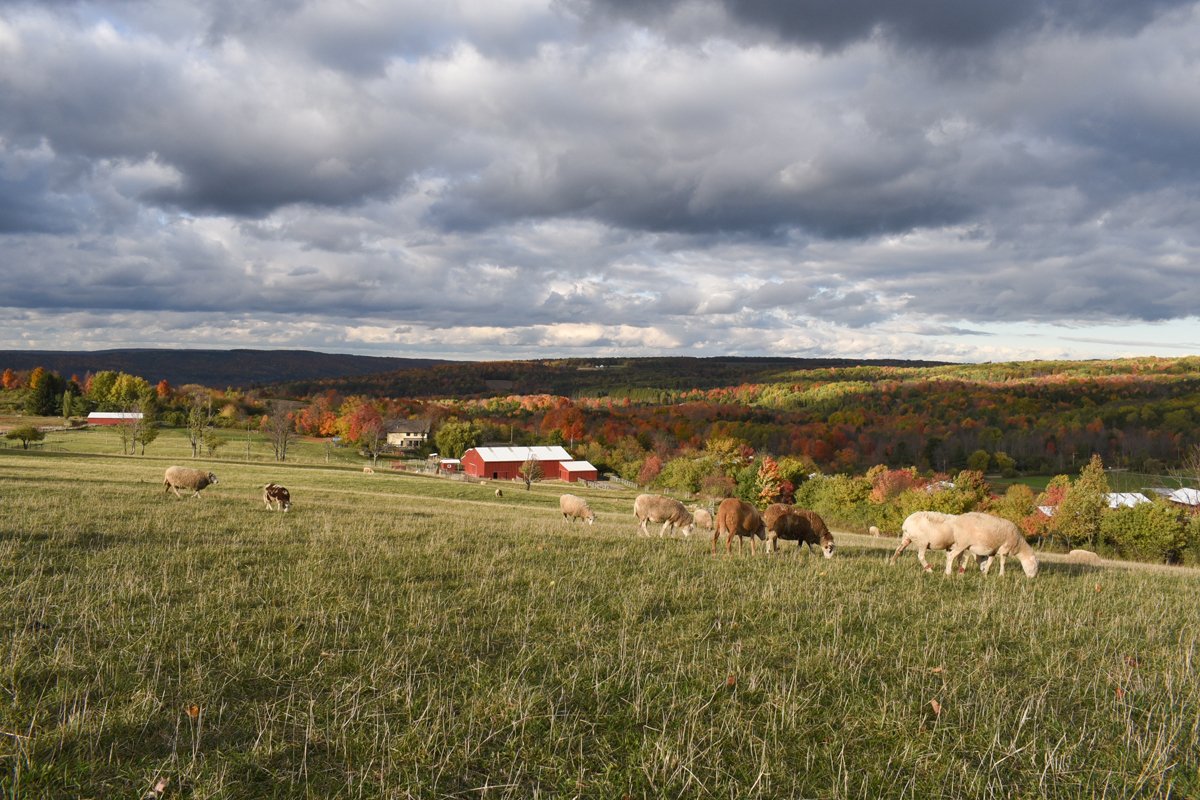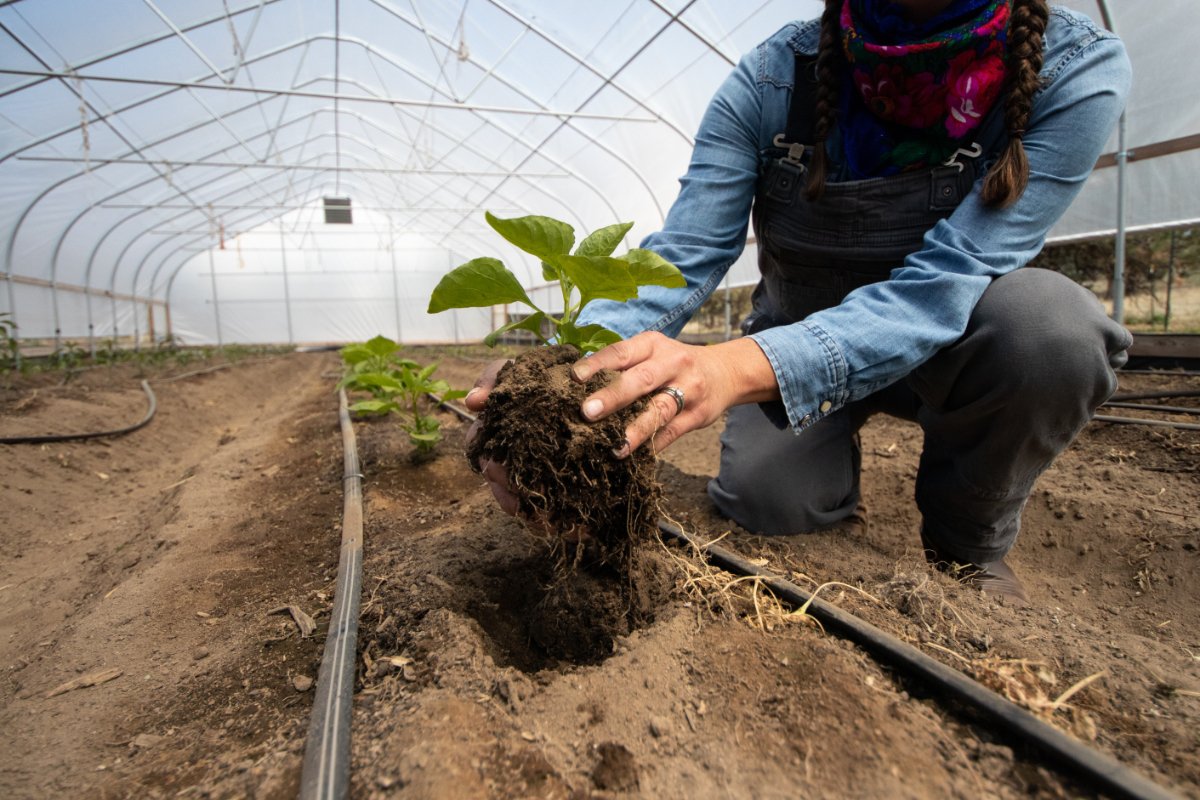This is the latest installment of our series Faces of the Farm Bill, wherein we set out to humanize the real-world impacts of ag policy.
For the last seven years, Kristy Kinlicheenie has worked as a 4-H extension assistant at the University of Arizona’s Apache Cooperative Extension in the city of St. Johns. That’s roughly 100 miles south of Window Rock, where Kinlicheenie grew up on the Navajo Nation.
It’s not uncommon for the county offices serving tribal communities to be located far from their tribal lands, which creates challenges and inequities with “a huge disconnect there with what services they can provide,” according to Kinlicheenie.
These geographic barriers drawn by jurisdictional boundaries create confusion and hurdles for local counties, neighboring states, and federally recognized tribes. Those challenges extend to the Federally Recognized Tribes Extension Program (FRTEP), a research-driven service that provides outreach and support to Indigenous farmers and ranchers on their reservations, bypassing long-standing county extension offices.
Although Arizona is home to a fifth of all FRTEP agents nationwide, less than a third of the state’s 22 federally recognized tribal communities receive support from tribal extension services.
That leaves the other two-thirds of Arizona tribes without any support clamoring for dedicated FRTEP agents, according to Trent Teegerstrom, associate director for tribal extension programs at the University of Arizona’s College of Agriculture and Life Sciences. “If I try to get one for you, I have to take it away from somebody [else].”
Fraught with decades of inequity, the Native Farm Bill Coalition is trying to fix FRTEP and its problematic grant funding model in the upcoming farm bill. The group’s “Gaining Ground” report outlines key recommendations, including raising annual funding, which would allow the research program to reach 100 reservations or more in the next four years.
Kinlicheenie, 32, specializes in 4-H youth programming through county extension for Apache County and helped found the Navajo Nation 4-H Program, but she regularly collaborates with the seven FRTEP agents scattered across six tribal communities in Arizona. Although she isn’t directly funded by that program, she has seen firsthand the challenges FRTEP agents face while trying to serve the state’s tribal communities.
Kinlicheenie spoke with Civil Eats about the Cooperative Extension System, her hopes for the 2023 Farm Bill, and the importance of funding FRTEP agents who are embedded within reservations throughout Indian Country.

Tribal youth win awards at the 2022 Arizona 4-H State Horse Show held at the Navajo County Fairgrounds in Holbrook. (Courtesy of Kristy Kinlicheenie)
How did you end up at the Apache County Extension office?
My mom and dad were ranchers. They instilled the love of horses and livestock in me. I didn’t know what, but I wanted to be somebody in agriculture as I got older. The first thing that came to me is that I wanted to be a doctor for horses and animals.
While growing up, I volunteered at the Navajo Nation Veterinary Clinic at Window Rock. I built those relationships so that when I graduated from Navajo Technical University and Colorado State University, they had a position to work on a mobile unit. My summers were spent traveling, working with different doctors from all over the Nation getting dogs and cats spayed and neutered.
I did that until I saw the job with the University of Arizona. I didn’t have any background with 4-H or county extension, but I loved teaching kids and sharing knowledge. I’m an educator at heart.
How did you handle any personal or cultural transitions into county extension?
I did an internship with the USDA National Diagnostic Services Laboratories in Ames, Iowa, and that was the first time I was away from my community. I was a born-and-raised rez kid. I had a huge culture shock. I learned that how we perceive our community, our home, even our family dynamics are totally different from how the outside world does.
















Like the story?
Join the conversation.